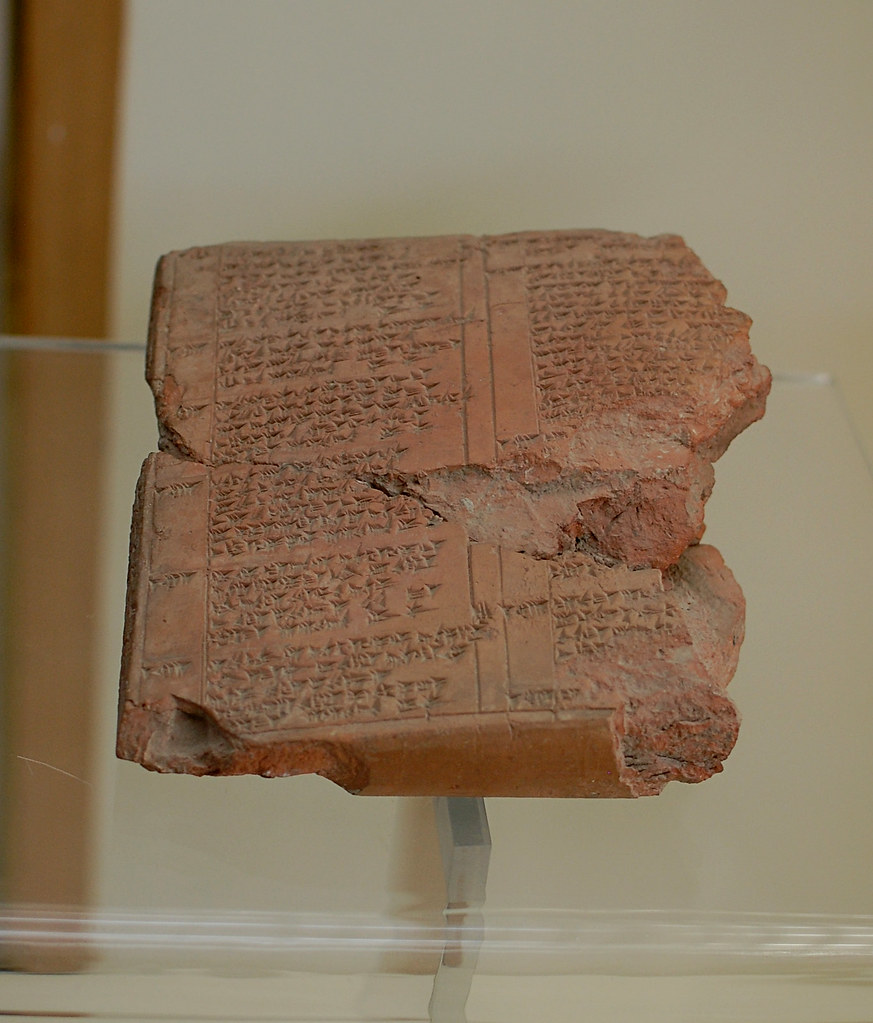We couldn’t finish the week in this time of a global pandemic without taking a look at epidemics and infectious diseases in ancient Mesopotamia.
Cuneiform texts are open to interpretation, and we cast our own experiences into the pot as we read. For example an interesting paper, written by an Iraqi consultant epidemiologist, reads the Lament of Sumer and Urim as the tale of evil clouds of epidemic disease blowing down out of the mountains around 2000 BC. Today’s tablet is a spectacularly damaged set of fragments of this lament. The tale concerns the fall of the great city of Ur, and many have tried to place their own interpretation on the events described. Common readings include invasion by the Elamites, a change in the climate leading to dust storms and famine, but plague is another reading which fits at least some of the text. In lines such as “Its people were as if drowning in a pond, they gasped for breath. Its king breathed heavily in his own palace,” the author hears the laboured breathing of infected people. Perhaps as an epidemiologist he is better-placed to read the signs and conditions for such epidemics. Perhaps he is primed to see infectious agents everywhere, like each one of us venturing out on our first masked walk during lockdown, and scrubbing our hands on our return.
When we consider that the transmission of disease was not well understood in these times, epidemics must have been a truly frightful experience. It must have been clear to them that people who were in close contact with the afflicted would go on to fall ill themselves. What theories, what hypotheses they had to explain this are not well known, but we do know that they used quarantine. A queen writes about her servant, struck with some unnamed illness: “I have made her dwell in the new quarters. Table and meal have been separated. Nobody will go near her bed and chair”. Given that sickness is treated as punishment for some transgression against the gods, isolation is likely a way to avoid anyone else being dragged into the mess and struck down as well.
Another royal letter has: “I hear that Nann is ill with simmum, but that she is still very much staying with the palace people and actually interacting with all the other women. Now put your foot down and make sure nobody drinks from the cup she drinks from, that nobody sits on the chair she sits on, and that nobody sleeps on the bed she sleeps on! She is not allowed to interact with all the other women!”
Although they can’t possibly have understood how diseases made the leap from person to person, they were aware that intimate contact was a risk factor. Social distancing was a prophylactic. No matter the logic or magic behind these quarantine measures, their effectiveness would have led to their propagation. Households, royal or otherwise, that followed the measures would have an advantage over those that ignored them, and so grow in influence while the ignorant fell. Like a gene that protects against infection, the meme of quarantine would also be passed on, inoculating society with a resistance to epidemics.
As the clouds appear to be lifting around the world, and we return to the streets, markets, and workplaces, we would do well to remember that these civilisation-destroying epidemics came in waves. Are 4000 years enough for us to have learned to wash our hands and keep our distance for the good of those around us?

